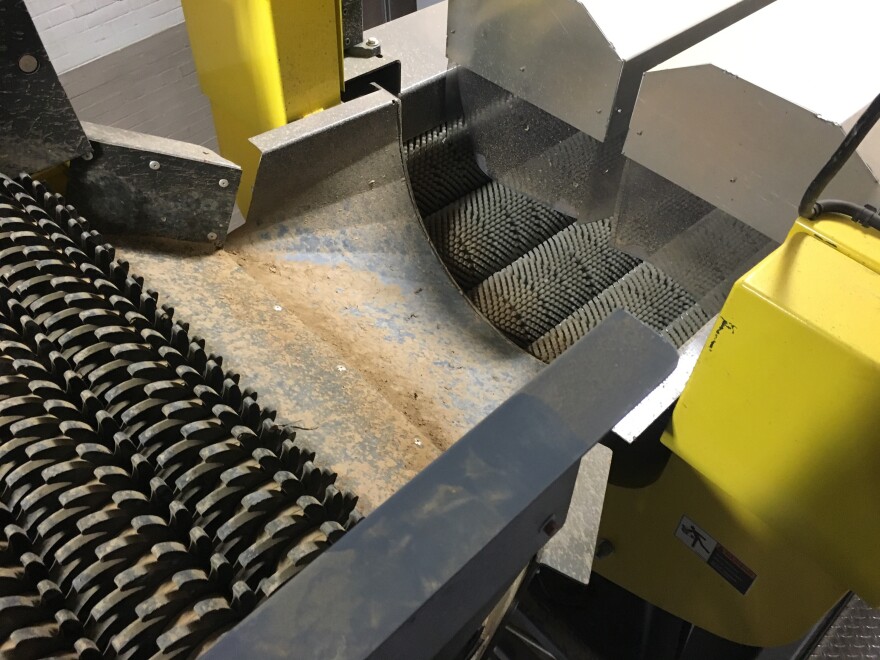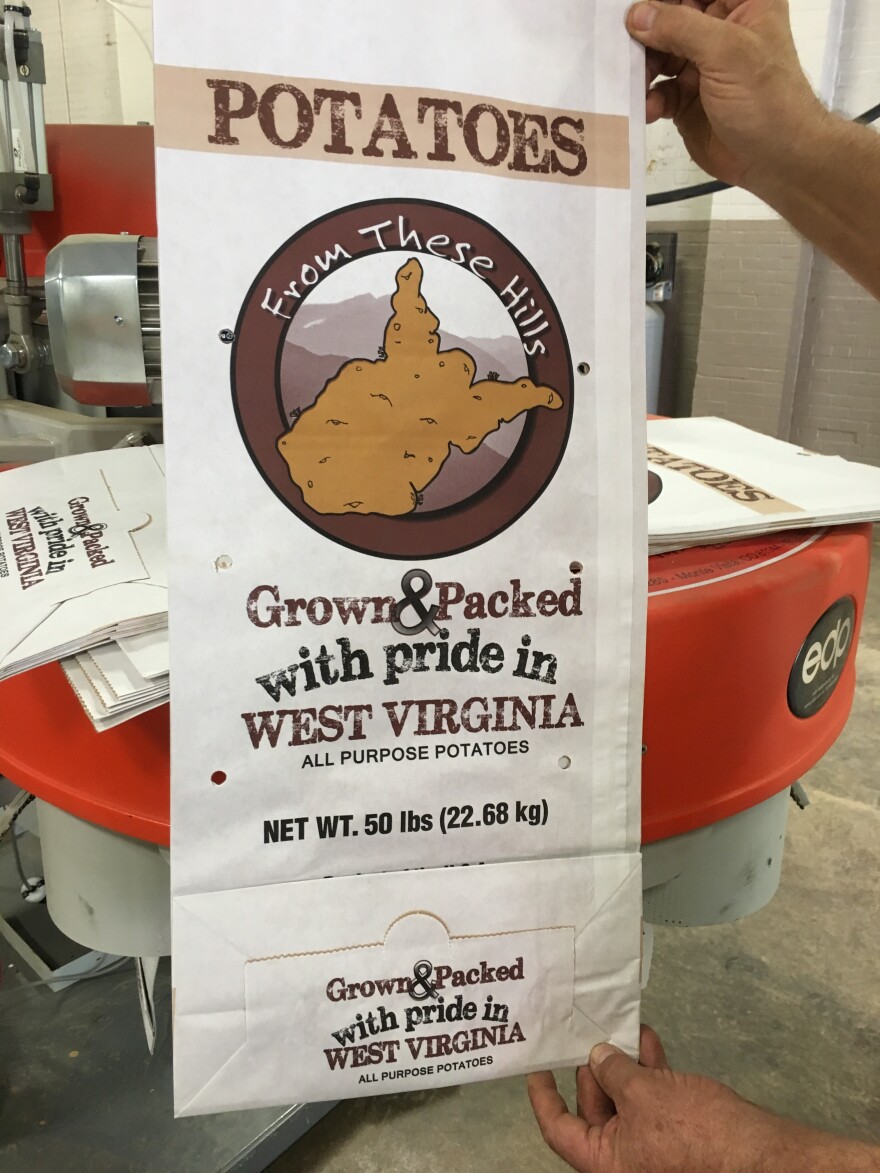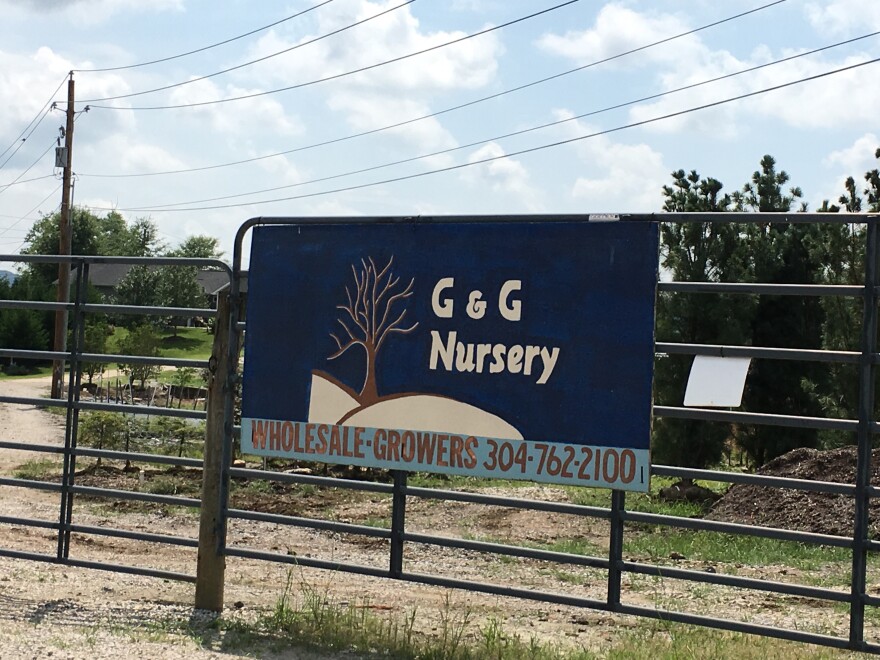The West Virginia Department of Agriculture hopes an investment in a new crop aggregation facility in Huntington will be the next step in helping the state’s economy grow through agriculture.
A nearly half a million-dollar investment sits in a warehouse space in the west end of Huntington. The large, silver and black piece of equipment spans the length of the warehouse in the National Guard Armory building on Virginia Avenue. It’s a root crop packaging machine that cleans and packages potatoes brought from various parts of the state.
The facility will be processing potatoes over the coming weeks from farmers involved in a three-year project led by the Department of Agriculture. The Huntington location serves as a crop aggregation point for farmers in an area that includes:
- Cabell
- Mason
- Putnam
- Lincoln
- Jackson
- Wayne
West Virginia’s Commissioner of Agriculture Walt Helmick says around 50 growers state wide and 30 in the Western part of the state are participating in the pilot project which is wrapping up the second of three years.
“We’ve got a huge opportunity here,” Helmick said. “This industry will be around for many, many years to come. And we talk about the farm-to-table movement and West Virginia knows all about that, at one point that’s what we did, we grew everything we ate. We believe that every count in West Virginia will benefit from agriculture.”
In year one more than 400,000 pounds of potatoes were sold through the program to local grocery stores, farmers’ markets, farm to school programs and wholesalers. Helmick said the goal is to capture some of the $6 billion that residents of the state spend on agriculture products that are grown outside of West Virginia.
But farmers like Steve Jordan at G&G nursery in LeSage are still being cautious about the program. He’s just not sure it will be profitable enough to continue farming potatoes after the third year of the pilot project is over. As a part of the program, the department of agriculture helps supply the seeds, equipment and chemicals needed to harvest potatoes.
“Well really we haven’t proven whether they are or aren’t, it’s the second year of the process, it’s a learning process,” Jordan said. “We’ve learned a little more this year than we did last year, so really we can’t say whether it’s going to be a profitable project or not yet.”
Jordan said for it to be profitable G&G would have to dedicate more acres of land to potato growing. At this point they’ve only designated a limited number of acres both of the first two years, but potatoes have to be rotated to new plots of land each year.
Jordan said the need for large plots of land is just one worry, though. At G&G, they’re also worried about what happens to the crop aggregation center after the three-year program is over. Commissioner Walt Helmick said he hopes that someone will locally take it over and work with the farmers. But Jordan along with G&G Nursery Part-Owner Glen Merritt are worried that may mean paying someone to use the facility, offsetting an already small return on their product. Steve Jordan.
“No one knows the cost of using the aggregation center and the cost of using the equipment,” Jodan siad. “With the pilot project the state has basically furnished everything and this year they cost shared some of the fertilizer and stuff, but no one knows what the cost of using the aggregation center is going to be or what’s really going to come of it, there’s nothing in stone.”
Helmick said the aggregation point and its machinery can also be used to clean and distribute more than just potatoes though. Farmers can bring in onions, beets, and other root crops for processing, expanding the potential for use.
The aggregation center will also be able to package leafy vegetables, cucumbers and black walnuts.
The Department of Agriculture also has an aggregation center in Huttonsville where prison workers grow potatoes to be ate in the prisons.























